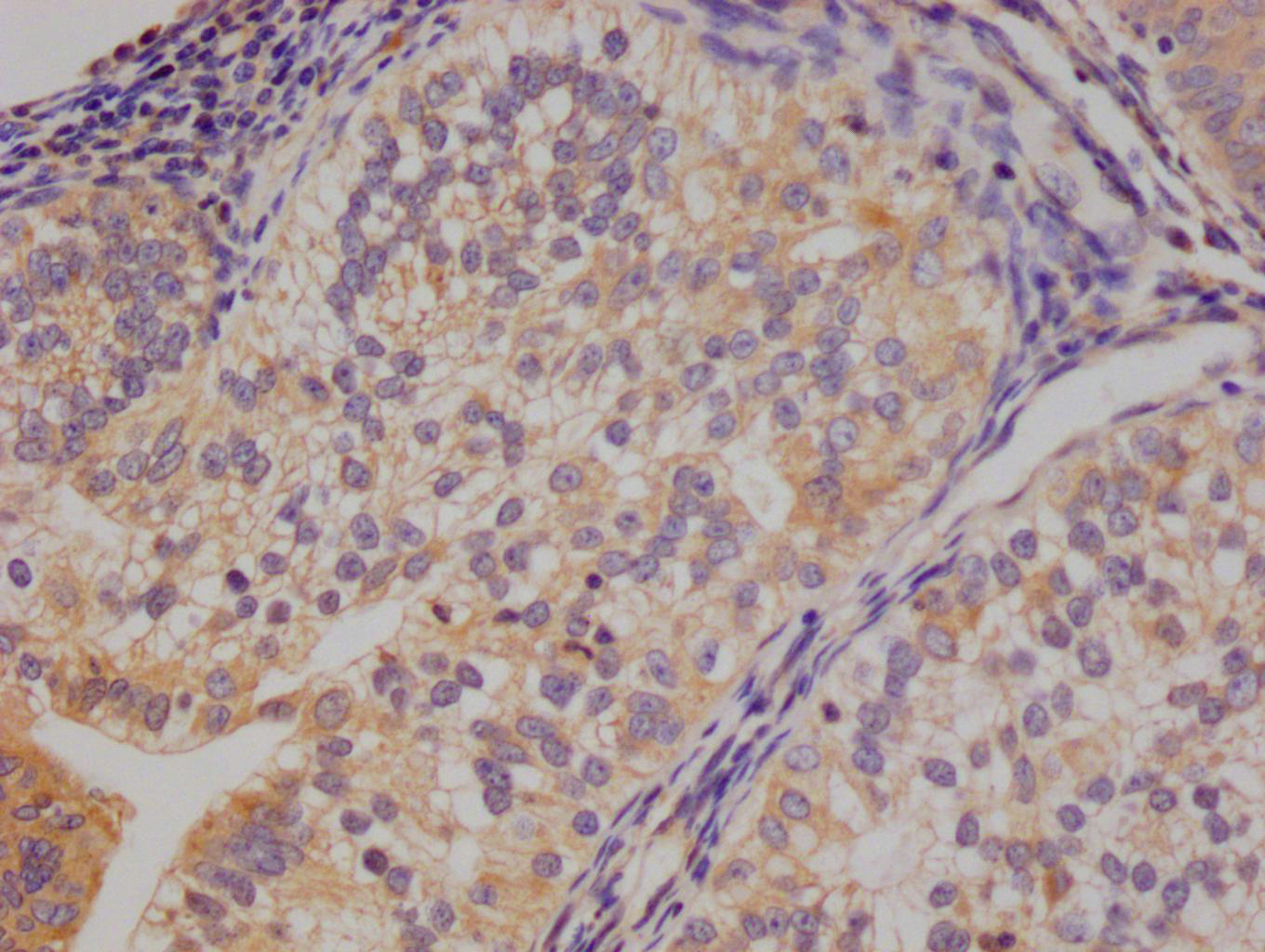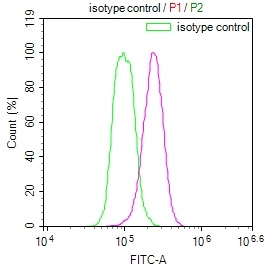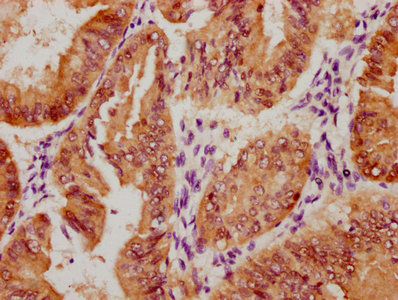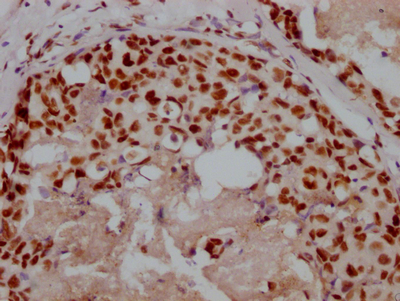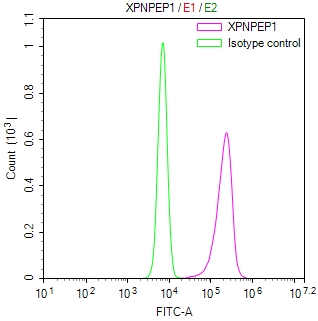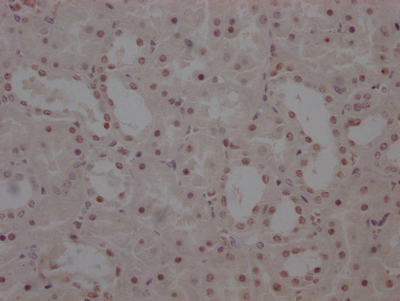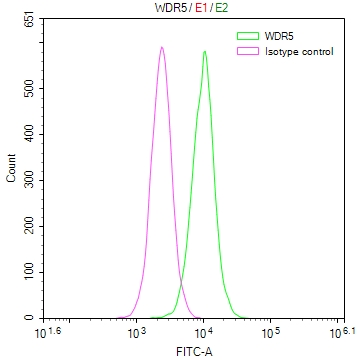UBXN1 Antibody
-
中文名稱:UBXN1兔多克隆抗體
-
貨號:CSB-PA025531GA01HU
-
規(guī)格:¥3,900
-
其他:
產(chǎn)品詳情
-
Uniprot No.:
-
基因名:UBXN1
-
別名:UBXN1 antibody; SAKS1UBX domain-containing protein 1 antibody; SAPK substrate protein 1 antibody; UBA/UBX 33.3 kDa protein antibody
-
宿主:Rabbit
-
反應(yīng)種屬:Human,Mouse,Rat
-
免疫原:Human UBXN1
-
免疫原種屬:Homo sapiens (Human)
-
抗體亞型:IgG
-
純化方式:Antigen Affinity purified
-
濃度:It differs from different batches. Please contact us to confirm it.
-
保存緩沖液:PBS with 0.1% Sodium Azide, 50% Glycerol, pH 7.3. -20°C, Avoid freeze / thaw cycles.
-
產(chǎn)品提供形式:Liquid
-
應(yīng)用范圍:ELISA,WB
-
Protocols:
-
儲(chǔ)存條件:Upon receipt, store at -20°C or -80°C. Avoid repeated freeze.
-
貨期:Basically, we can dispatch the products out in 1-3 working days after receiving your orders. Delivery time maybe differs from different purchasing way or location, please kindly consult your local distributors for specific delivery time.
-
用途:For Research Use Only. Not for use in diagnostic or therapeutic procedures.
靶點(diǎn)詳情
-
功能:Ubiquitin-binding protein that plays a role in the modulation of innate immune response. Blocks both the RIG-I-like receptors (RLR) and NF-kappa-B pathways. Following viral infection, UBXN1 is induced and recruited to the RLR component MAVS. In turn, interferes with MAVS oligomerization, and disrupts the MAVS/TRAF3/TRAF6 signalosome. This function probably serves as a brake to prevent excessive RLR signaling. Interferes with the TNFalpha-triggered NF-kappa-B pathway by interacting with cellular inhibitors of apoptosis proteins (cIAPs) and thereby inhibiting their recruitment to TNFR1. Prevents also the activation of NF-kappa-B by associating with CUL1 and thus inhibiting NF-kappa-B inhibitor alpha/NFKBIA degradation that remains bound to NF-kappa-B. Interacts with the BRCA1-BARD1 heterodimer and regulates its activity. Specifically binds 'Lys-6'-linked polyubiquitin chains. Interaction with autoubiquitinated BRCA1 leads to the inhibition of the E3 ubiquitin-protein ligase activity of the BRCA1-BARD1 heterodimer. Component of a complex required to couple deglycosylation and proteasome-mediated degradation of misfolded proteins in the endoplasmic reticulum that are retrotranslocated in the cytosol.
-
基因功能參考文獻(xiàn):
- The ability of UBXN1 and other family members to negatively regulate the NFkappaB pathway may be important for dampening the host immune response in disease processes and also re-activating quiescent HIV from latent viral reservoirs in chronically infected individuals PMID: 28152074
- p47 promotes, whereas SASK1 delays the degradation of a single ERAD substrate, alpha-TCR. Additionally, we found that SAKS1 selectively inhibits the degradation of ERAD substrates without affecting cytosolic proteasomal substrates. PMID: 27785701
- UBXN1 is a negative regulator of NF-kappaB signaling. PMID: 25681446
- UBXN1 is induced and recruited to MAVS after virus infection, serving as a brake to prevent excessive RLR signaling, most likely at a late stage of infection. PMID: 23545497
- SAKS1 inhibits protein degradation mediated by p97 complexes in the cytosol with a component of the mechanism being the ability to shield polyubiquitin chains from ubiquitin-processing factors. PMID: 21135095
- Data suggest that UBXN1 regulates the enzymatic function of BRCA1 in a manner that is dependent on its ubiquitination status. PMID: 20351172
- Specific interaction of rat protein 2B28 with rat Homer2 may play a role in regulation of protein degradation by ubiquitin-proteasome systems and that this function may be specific to Homer2 proteins among Homer family proteins. PMID: 15944415
顯示更多
收起更多
-
亞細(xì)胞定位:Cytoplasm.
-
數(shù)據(jù)庫鏈接:
Most popular with customers
-
-
YWHAB Recombinant Monoclonal Antibody
Applications: ELISA, WB, IHC, IF, FC
Species Reactivity: Human, Mouse, Rat
-
Phospho-YAP1 (S127) Recombinant Monoclonal Antibody
Applications: ELISA, WB, IHC
Species Reactivity: Human
-
-
-
-
-


